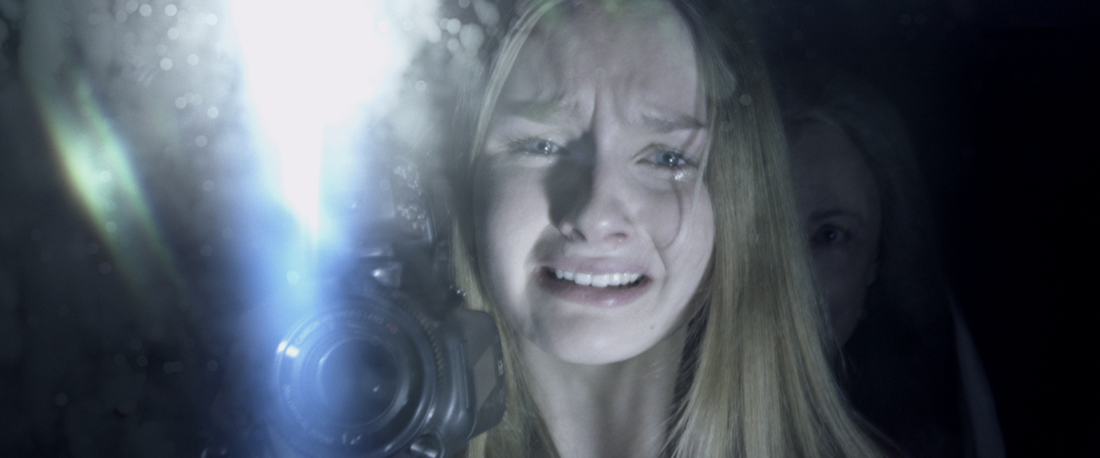
This piece was written in September 2015 for the first and only issue of a magazine published by the University of Kent’s School of Arts.
Following the big-budget atrocities of After Earth and The Last Airbender, M. Night Shyamalan has had to go back to basics with his new horror film, The Visit. Working with a meagre budget (by his standards) of $5 million, he eschews overwrought apocalyptic designs and laughable fantasy indulgences, and instead sets the narrative action almost entirely within an unassuming farmhouse. The drama there is simple: Becca (Olivia DeJonge), a teenage filmmaker, and her younger brother Tyler spend a week in rural Pennsylvania getting to know their estranged grandparents, and tensions grow as the children become increasingly aware that nanna (Deanna Dunagan) and pop-pop (Peter McRobbie) put the strange in estranged. That is, quite remarkably given who we’re talking about here, your lot; Shyamalan’s vision with The Visit never extends beyond a modest chamber piece predicated on the interactions between four characters. And he would do well to rein it in like this more often, as The Visit is the work of a filmmaker liberated, rather than inhibited, by constraints.
This is most clearly manifested in Shyamalan’s decision to shoot The Visit in the style of a documentary, with the film doubling as a film made about the trip by the precocious, film-savvy Becca. This is, of course, a cheap way of shooting for Shyamalan, but he approaches this frankly tired style of filmmaking with a grace that few others have managed. On one level, the faux-doc style provides Shyamalan with the opportunity to imbue his formal decisions with quick and easy emotional meaning because, considering that Becca is the diegetic filmmaker and editor, all the filmmaking choices explicitly express character. On another level, however, this style also allows Shyamalan to indulge his long-dormant sense of playfulness. He delights in the spatial and emotional proximity to the protagonists, in building tension through the manipulation of on-screen and off-screen space, and in letting both of them goof around on camera like the children they are. The result is a funny, unabashedly entertaining film; not an ironic horror-comedy, but a genuine horror film made with a wry smile. It finds Shyamalan shorn of pretension and in command of fundamental things that had previously eluded him, such as tension and levity. It is, at the very least, the most accomplished and enjoyable work he’s made for fifteen years, but it could very well be his best film to date.